


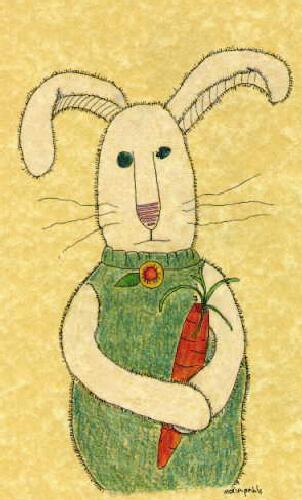
the seed pod #067
second february issue 1999
© Copyright 1999 Maria Pahls
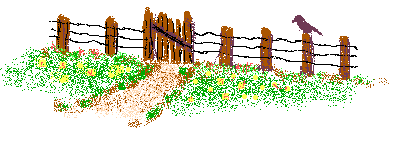
the fence post dear friends:
(editor's letter)
recently i was watching a favorite television program, "antiques road show". it is a PBS series that travels about the country allowing folks to bring in their treasures for free appraisal. one of the program's highlights this particular evening was a hand carved lattice work with 25 or more small, carved birds and nests with eggs and hatchlings. the owner of the piece was surprised to find out that it's value was in the range of $30,000 - even though the artist was not "known". AND her mother in law was going to throw it away.
these wonderful birds were carved in the 1800's by a farm hand who, as the story goes, was deaf and did not speak. i wondered to myself if he had ever heard the song of a goldfinch or hammering of a wood pecker as it echoes through the forest. i wondered if he had ever spoken the words "whippoorwill" or "nightingale". he may not have, yet he created something quite wonderful with his existing senses of touch and sight.
that is the inspiring part to me, working with what he had to create something beautiful. for me, the lesson is this- we all are given what we need- whether we fritter away our lives focusing on what is missing or utilizing the gifts that we do have to create something lasting is up to us.
maria
there is only one perfect strawberry in existence
and this is the strawberry of memory.
stafford whiteaker
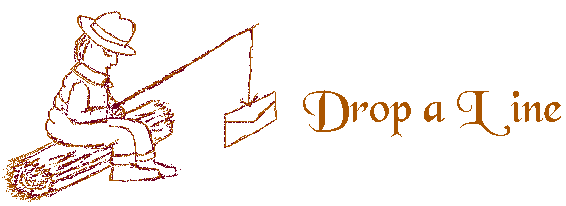
miscellaneous letters sent in by readers
shari wrote in before she departed for valley forge:
"Plans are big with my husband on getting started in the new gardens at our new house. I am having a sign done for my "open" studio, and plan on having a stone path guiding people to it. I told Al I wanted rustic twig chairs, primitive birdhouses, old fashioned flowers, green mossy clay pots with wonderful old style flowers; all this to be at the doorway of my shop.
I should have been working hard at the samples for Valley Forge this week, but the house building just keeps me reeling. They poured the cement for the basement--- which is to be my studio--- we will be ready to move in right after we get back from Valley Forge.
I have so much new stuff. The one I think is the best is "Ragweeds"--- He is a celluclay face flower guy. His face is paper mache, black face. Then daisy petals round his head like hair stuck up. He is VERY long and skinny, wearing homespun flannels in greens and golds. He has long skinny legs with curled up toes.
I loved the idea of buying primitive hearts and coating the wax on and adding spices (issue 66). I am going to try this but plan to create the paper mache hearts myself, as well as other shapes: Snowballs, pumpkins, stars, moons... Bought the wax, bought a used crock pot, now just must find the time.
If anyone has any further suggestions for a brand new herb/flower garden that I could do outside my shop, I would love to hear suggestions. For starters I have a seat-less chair I intend to plant flowers in the "seat" of, (MY HUSBAND HATES THIS IDEA! HAHA) and have been keeping my eyes open for a head board and foot board of an old bed; I want to plant flowers for the "spread" thus creating a 'FLOWER BED'."
After Valley Forge I am anxious to try doing some other things here soon--- un-doll related--- perhaps sewies, purses, something like that... need a break.
When we move in the next week or so I don't intend to stop working. Husband will have to picked me up bodily--- I can't afford the down time even for a day.
House is more beautiful than my wildest imaginings. I bought several neat Folky things for my house: 3 large iron ants (meant for the garden, but I intend to use them on my windowsill) A large Rooster, painted and folky looking in iron VERY BIG! 3 iron American Flags in graduating sizes to put on the front yard during 4th of July, and a cool birdhouse. That booth was great... also a long running snake. Again, will likely put most of this stuff IN my house rather than OUT. Got some primitive Shore Birds--- they were so cool.
here is a letter from tish...
"I'm so glad that I joined! I live in "farmland" PA, cows behind us and cornfields everywhere else. I have a tiny shop attached to my house called The Tweed Weasel handcrafted designs, where I sell the things that I design (plus a few things from local artists in my area).
No one in town really understands what I'm doing. I'm "the lady with all the junk in her yard"! Some people walk in and quickly turn to leave, others have asked my husband if he has nightmares from looking at this stuff all the time. They even say that my stuff reminds them of the movie "The Nightmare before Christmas".
Anyways, I'm very thankful to have found so many people to talk to that share my enthusiasm for primitives. (My family &friends will be thankful too!) It total consumes my every waking hour ( sometimes sleeping ), always trying to think of new designs, different techniques, I'm sure you know what I talking about..."
carolyn got her cloth doll magazine with the primitives article this week!
"I received my Cloth Doll mag this past weekend and I was filled with pride reading your article. I found myself hanging onto every word. I thought it was great and the pictures just put the icing on the cake."
primitive ponderings
questions asked by readers, then replied upon in later issues.
shari lutz wants to get some suggestions for a primitive garden out side her studio basement. any ideas?
can any one give some advise on making a twig fence? - Pat Sloan
tips & techniques
winter dryness
if your hands are dry from crafting and the cold weather try slathering them with bag balm (sold in most hancock fabric stores). this salve was used for cows udders that became chaffed and humans have benefited from it's healing. i think it's a good idea to apply it at night just at bed time and wear some cotton gloves over the top. when you awake your hands should be refreshed. also commercially available are products that employees of the meat packing industry use on their hands. these heavy, water repellant, yet non-greasy creams are wonderful preventatives.
baskets suffer from the dry weather
to keep baskets from becoming brittle soak in tepid water for a few minutes and allow to air dry. i do this once each year as a way to clean dust and keep the baskets in shape. *never scrub an antique painted basket and use caution when soaking old baskets.
gloves of leather need to be kept supple as well. use a leather conditioning lotion sold at most shoe shops. put your gloves on and apply the conditioner to the palms and rub in like hand cream while your hands are still inside the gloves... making sure to get between the fingers. then remove the gloves and allow to thoroughly dry.
when working with grape vine and it is seemingly dried out there is one trick you can try to get it pliable again. soak in warm water for several hours with a table spoon of liquid laundry fabric softener. sometimes this will put the life back in dried out baskets too (but this is only a last resort for the baskets always check with an expert before soaking any very old or valuable basket).
sawdust modeling compound
- 1 c fine sawdust (sift to remove large pieces)
- food coloring (optional)
- old newspaper
- shellac or varnish
- 1 c thin paste or paper paste
- if desired, dye sawdust with food coloring. drain and spread on newspaper to dry before using.
- mix sawdust and paste to a thick dough like consistency. knead until thoroughly mixed. the amounts of paste may vary according to the kind of sawdust used. if the sawdust is coarse, more paste may be needed to obtain the proper consistency. quantity: makes about 1 cup. uses: model as with clay. articles molded with this compound have a lovely wood grain appearance.
to use: pieces of dough may be added to the basic piece by moistening and sticking them down. within two to three days the finished article will harden. to speed up drying bake in a 200-degree-f. oven for 1 to 2 hours, depending on the size of the article. to give the article a permanent finish, spray with shellac or varnish. they can also be sanded to give a smoother finish.

WHO'S IT?
WHAT'S IT?
cooper: one who makes and repairs wooden tubs and casks.
cobbler: one who makes and mends shoes (to cobble is to make or mend).
spunk: term for an early match on in which the tips were dipped in sulfur. not lit by striking, the sulfur merely keep the flame alight longer.
tinder box: an essential in the colonial home, it contained the materials necessary for lighting a lamp or fire. contents usually included a piece of steel, flint and a disc to cover pieces of tinder, scraps of shredded cloth or pine splinters which would ignite readily. the flint & steel were struck together until a spark flew onto the disc protected tinder in the bottom of the box. from this flame twists of paper or splinters of wood were carried, lit, to the hearth.
block / troller stool: terms for early decoys meant to attract birds. the stool was a stick up type meant for sandpipers, while the troller was a floating decoy. decoy making is truly an american craft beginning with native americans and learned by the pioneers to lure waterfowl within gunshot range. there was some debate to whether the fine details resembling a real bird or just the basic out line of it worked best. this resulted in a great variety of decoys from papier mache, to wood, metal, canvas and rubber.
sources for above info: american heritage dictionary & price guide to country antiques & american primitives by dorothy hammond


the pbs series called "i'm gonna make me a world" gives an informative glance at black history. especially interesting to me were the actors (black and white) made up in "black face" to which i believe the history of the golliwogg doll is firmly linked.
ARTICLE
golliwoggin'
by maria pahls
the verse below was included in some information i found on the golliwogg. on the surface it sounds charming, however, it evolved to have deeper hidden meanings linked to racial injustice which i later uncovered during research."Weel a-bout and turn a-bout
And do just so.
Every time I weel a-bout
I jump Jim Crow"
the story of the golliwogg begins with Florence Kate Upton...
as a child Florence Kate Upton owned a nameless black doll. he was purchased at a minstrel show during her childhood in america. looking back on her childhood and this doll Florence recalled..."Seated upon a flowerpot in the garden, his kindly face was a target for rubber balls ... the game being to knock him over backwards. It pains me now to think of those little rag legs flying ignominiously over his head, yet that was a long time ago, and before he had become a personality. "
the turn of events in her life perhaps are a key part in the golliwogg's existence today as the first black hero for children. her english parents began raising their four children in new york city. her father's death when Florence was 14 hastened her mother, Bertha Upton, to return her family to england.
Florence had begun art training in new york and picked up again when she was in england. there she freelanced for a children's book and wrote stories appearing in the "strand" and the "idler", her intent was to earn money for art school in paris. she used her figure models (called "penny woodens") as the model for her first punch cartoon and hoped to do a children's book of her own. she sketched the woodens in various poses and by chance introduced the black doll to the plot calling him "gollywogg". it is interesting to note that the doll had been left in her mother's home and later recovered from the attic after she had already started the book.
golliwogg soon became the star of her book. Florence would go on to write and illustrate a series of wonderful stories to which her mother composed accompanying verses. often engaging in adventure the gallant golliwogg was always tended to by his adoring young friends and nursed back to health. she attempted a few unsuccessful non-golliwogg books but eventually returned to her hero. Florence Upton produced a new book for the christmas market each year between 1885 and 1912. her book series had achieved its goal. Upton went on to become a successful society portrait painter.
the golliwogg series,unlike other children's books of that time, were cleanly illustrated making maximum use of negative space. the clean contemporary look often involved recent technology such as bicycles, cars, airships, and the like. the adventures of two dutch dolls and a golliwogg predated Helen Bannerman's 1898" little black sambo" by three years, although the "sambo" figure itself goes back much further. it also proceeded Nabokov's golliwoggs: lodi reads english 1899-1909 by D. Barton Johnson. around the same time composer debussy, in his suite children's corner (1906-08) included a "golliwoggs cake-walk." this was written for his beloved daughter and her own little doll.
the golliwogg maintained it's popularity through the twenties in england and even well into the post wwII period. from 1930 -1980 he was used as a promotional mascot for Robert's & Sons preserves.
Florence Upton donated her original golliwoggs drawings for public auction to support the wwI british war effort. her five penny-wooden dutch dolls and the golliwogg are now on view at the bethnal green museum of childhood in london.
minstrel show: variety show with stock characters, stand-up comedians, tall tales, songs and dances which reflected the white man's idea of black music and made liberal use of crude, even offensive dialect and grotesque stereotypes.
editor's note: read more about daddy rice, jim crow laws and minstrel shows by using the links in spiderweb.
supplemental:
Verlene Brooks of Jiggety Jig shared her own article written to accompany some dolls in her catalog:
"(As to the origin of the term "Golliwogg") there are bits and pieces of other stories that some folks say are true... During the time the British Army was in Egypt, the Suez Canal was being built... and the workers wore armbands labeled W.O. G. S. (workers of government service). When the men returned from their digging, their faces were blackened with soot and dirt and the whites of their eyes and teeth were quite vivid surrounded by such a blackened face... and thus they were nick-named "gouls"... which combined with W.O.G.S. became Golliwoggs. When the British returned to England, they brought back with them little black dolls from Egypt and called them Golliwoggs.
Another story relates the tale of the pollywog. The old English word "polwygle" (or wiggle head) was an alternate word for tadpole, the larva stage of a frog... and as words change it became "pollywog". One writer suggests that Florence Upton's mother (Bertha) could have misheard the word and thought it to be "gollywog" and passed on that name to little Florence's black doll. Then as an adult, Florence (creator and authour of the Golliwogg series) continued to use that name as the character for her drawings.
Still others say the Golliwogg was made in imitation of freed slaves who spent their money on waist coats with long tails... while others say they represented black minstrels.
Other stories share a demeaning aspect to this delightful doll and his name... who's origin was meant as a child's plaything... innocent and full of fun. Today, the Golliwogg is just called a " Golly"... and having been "born" during the same era as the Teddy Bear... it is quite popular to display Gollys and Teddy's together.
The preceding is a collection of tales, rumors and actual history gathered during my research of the Golly doll. In my wanderings through the dusty aisles of old books stores and public libraries I happened to come across what appeared to be a small faded black and white photograph of a little girl standing in a pose... as if waiting for her picture to be taken. In the background was a primitive little hut with a thatched roof. In the child's hand was clasped her most prized possession - hanging there from its owner's protecting hand was the limp and bedraggled body of a well-loved doll - whose face was unmistakably... that of the historic... and beloved Golly."
american visionary museum
800 hey highway
baltimore md
sara bernstein
gollywogg and teddybear patterns
10 sami ct
englishtown, nj 07726
send 55¢ large SASE for brochure
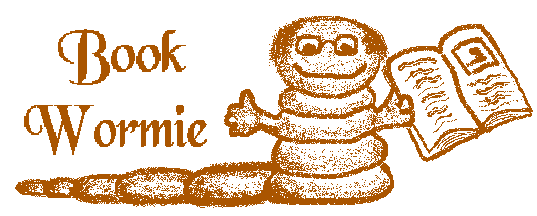
book reviews
&
books of interest
Tasha Tudor's Garden
by Tovah Martin, Richard W. Brown
Hardcover - 160 pages (October 1994)
Houghton Mifflin Co (Trd)
ISBN: 0395436095
a lark ascends: Florence Kate Upton, artist and illustrator
by norma s. davis
hardcover (may 1992)
scarecrow pr
isbn: 0810825112
sambo sahib: the story of little black sambo and helen bannerman
by elizabeth hay
out of print
asin: 0389201510
inside the minstrel mask: readings in nineteenth-century blackface minstrelsy
by annemarie bean (editor), james v. hatch (editor) brooks mcnamara (editor)
paperback (november 1996)
wesleyan univ pr
isbn: 0819563005

web sites of members & other sites of interest
jim crow laws & segregation practices
read more about the meaning of jim crow and daddy rice
http://negro-league.columbus.oh.us/jimcrow2.htm
http://www.usbol.com/ctjournal/JCrow1.html
minstrel show (brief explanation)
http://encarta.msn.com/index/conciseindex/68/06803000.htm
prose
the pleasant spring is here again;
it's voice is in the trees,
it smiles from every sunny glen;
it whispers in the breeze.
sent in by lisa gaines found in an old school reader bought at a flea market
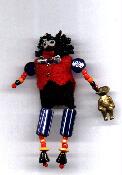

|
|
All rights reserved. No part of this newsletter may be reproduced without written permission from the publisher, except by a reviewer who may quote brief passages in a review with appropriate credits; nor may any part of this newsletter be reproduced, stored in a retrieval system, or transmitted in any form or by any means -- electronic, mechanical, photo- copying, recording, or other -- without written permission from the publisher.
 HOME PAGE
HOME PAGE